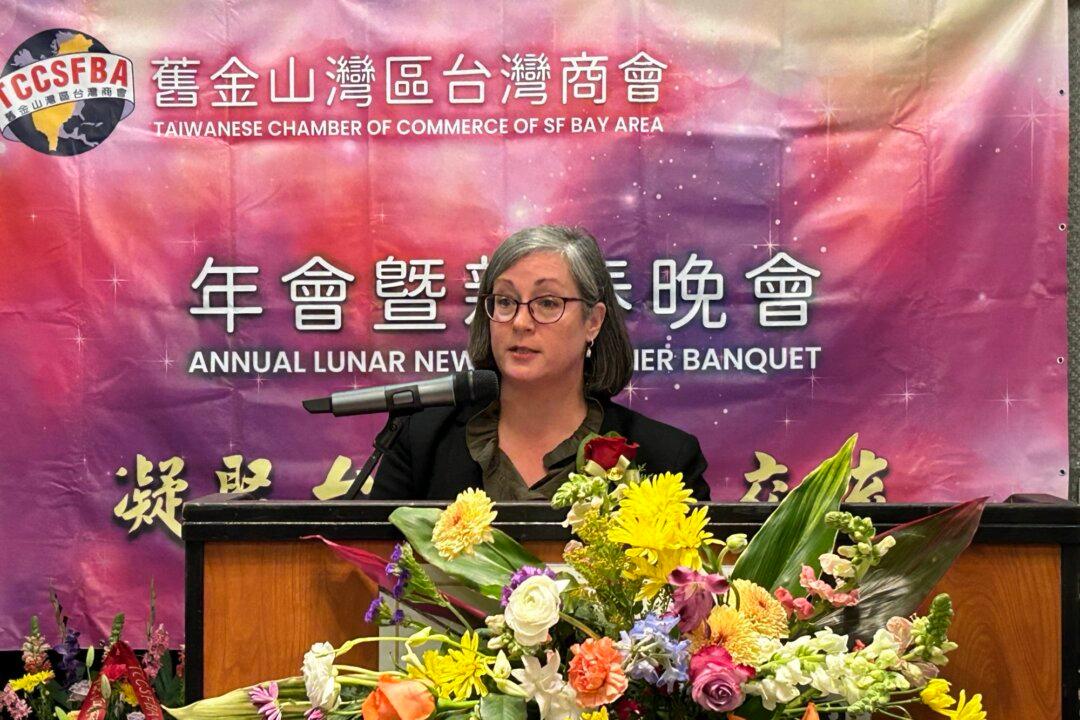Greg Conlon, the Republican candidate for California state treasurer, is pushing for changes to the public employee pension system in order to try to save California’s credit rating.
“We [California] have the fourth-worst credit rating in the United States, while we are the wealthiest state in the Union,“ Conlon told The Epoch Times. ”It is really a disgrace to be the fourth from the last. Only Kentucky, Illinois, and New Jersey have worse ratings than we do.”
Based on the Standard and Poor’s credit-rating system, California’s grade in 2017 was AA-. Kentucky’s was A+, New Jersey’s was A-, and Illinois’s was BBB-. The other five states with the same grade as California (AA-) are Connecticut, Kansas, Michigan, Pennsylvania, and West Virginia.
California’s credit rating has held steady for three consecutive years.
If elected, Conlon says he plans to make improving California’s credit grade his No. 1 job. He believes that it will be his responsibility to educate the governor and legislators about the importance of the state’s credit rating.
“Most of the people [who] run for state treasurer are really in the running for governor four years from now or eight years from now, so their primary objective is to become governor,” Conlon said. “I want to be the treasurer, and that is going to be it.”
If the state’s credit rating were higher, the state could spend less money in interest on government debts, thereby saving taxpayers’ money.
When asked about the state’s indebtedness, Conlon answered: “We are talking about $300 billion in unfunded pension liability. In addition to that, we have $85 billion worth of long-term general obligation bonds, so, between the two, we have almost half a trillion dollars [in debt],” Conlon said.
The state’s actual total debt is very difficult to estimate because there are different ways to calculate the numbers, Konstantinos Roditis, a candidate for California state controller, said.
“The biggest thing is the rate of return, or the discount rate,” Roditis said, when commenting about the unfunded pension liability. “California is saying we’re having a rate of return of 7.5 percent, and we’re not anywhere near 7.5 percent.”
The Stanford Institute for Economic Policy Research published two estimates for the unfunded liability from the State Public Pension System: a total pension debt of $992.4 billion, based on a discount rate of 3.25 percent, and $247.6 billion, based on 7.5 percent.
Conlon aims to make the reform of the State Public Pension System a major priority if he is elected. His plan would involve leaving alone the current public employees’ pension plan, but changing all the new employees’ pension plans to a “defined contribution” plan that would be very similar to 401(k) plans offered in the private sectors.
The current public employee pension system can be called a “defined benefit” system, which calculates the retirement benefits using a pension ratio multiplied by the number of years in service. For example, most public employees in California have a pension ratio of 2.5 percent annually, meaning that for a public worker who has worked for 20 years before his or her retirement, his or her pension will be 20 x 2.5 = 50 percent of his salary before retirement.
In a “defined benefit” pension system, the government promises the retirement benefit to the employees when they are first hired, and the government puts aside a portion of the employees’ pay each year into a retirement saving system. The money in this system is invested, and the retirees can withdraw money after retirement.
A drawback of this system is that the government has no way to know the future investment return rate at the time of hiring an employee. If the investment return falls short of projections, the government will be left with unfunded liabilities.
However, in a “defined contribution” plan similar to a 401(k), a public employee’s total retirement will basically be the employee’s own retirement savings, which are equal to his or her own total contribution, plus the employer’s matching fund and the plan’s investment returns.
In the “defined contribution” plan Conlon has proposed, public employees will manage their own retirement plans with their own risks, the same way as people who work in private sectors. The government and taxpayers are therefore free of possible unfunded liabilities.
Conlon has three decades of experience in accounting and finance in both public and private sectors, as well as with non-profit organizations. He has run for treasurer twice before.
Although he lost the 2014 election for treasurer, he received 41.19 percent of the vote; that makes him optimistic this time.





